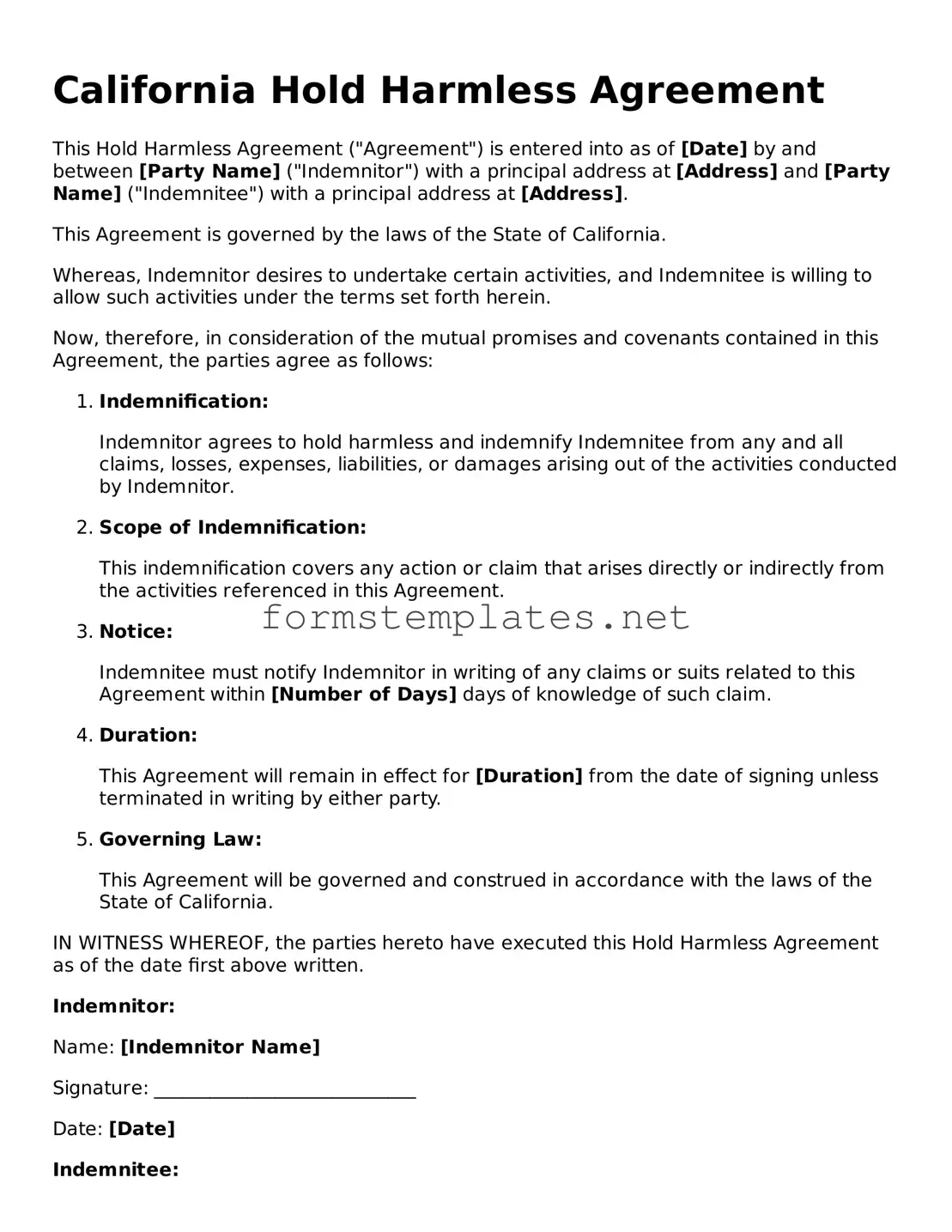California Hold Harmless Agreement
This Hold Harmless Agreement ("Agreement") is entered into as of [Date] by and between [Party Name] ("Indemnitor") with a principal address at [Address] and [Party Name] ("Indemnitee") with a principal address at [Address].
This Agreement is governed by the laws of the State of California.
Whereas, Indemnitor desires to undertake certain activities, and Indemnitee is willing to allow such activities under the terms set forth herein.
Now, therefore, in consideration of the mutual promises and covenants contained in this Agreement, the parties agree as follows:
-
Indemnification:
Indemnitor agrees to hold harmless and indemnify Indemnitee from any and all claims, losses, expenses, liabilities, or damages arising out of the activities conducted by Indemnitor.
-
Scope of Indemnification:
This indemnification covers any action or claim that arises directly or indirectly from the activities referenced in this Agreement.
-
Notice:
Indemnitee must notify Indemnitor in writing of any claims or suits related to this Agreement within [Number of Days] days of knowledge of such claim.
-
Duration:
This Agreement will remain in effect for [Duration] from the date of signing unless terminated in writing by either party.
-
Governing Law:
This Agreement will be governed and construed in accordance with the laws of the State of California.
IN WITNESS WHEREOF, the parties hereto have executed this Hold Harmless Agreement as of the date first above written.
Indemnitor:
Name: [Indemnitor Name]
Signature: ____________________________
Date: [Date]
Indemnitee:
Name: [Indemnitee Name]
Signature: ____________________________
Date: [Date]
